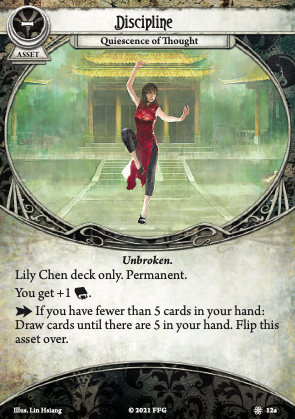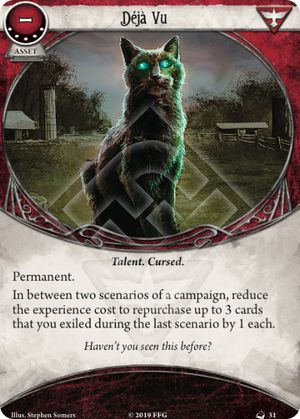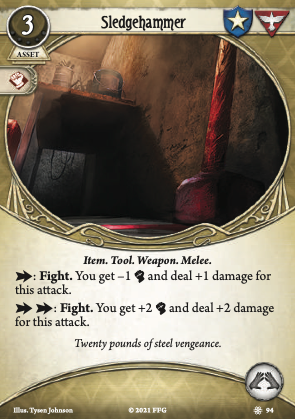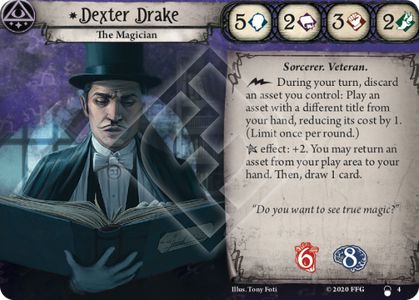
Something that I haven't seen mentioned yet in any discussions about this card is its cheeky interaction with her signature Weakness (which she may have up to four copies of). Drawing cards and flipping the asset are two discreet sentences and in that order. Thus, if you draw Burden of Destiny, this Discipline will still be Unbroken and a legal target for the weakness. Since it was about to flip anyways - you lose nothing further by choosing it!
The 'cannot flip back this round' clause on Burden of Destiny does mean that the second step doesn't immediately reset the asset to Unbroken, which prevents this from reaching cheese levels, but it otherwise isn't a concern as the discipline wasn't going to flip back at the end of the round anyways (on account of drawing up to 5 cards).



